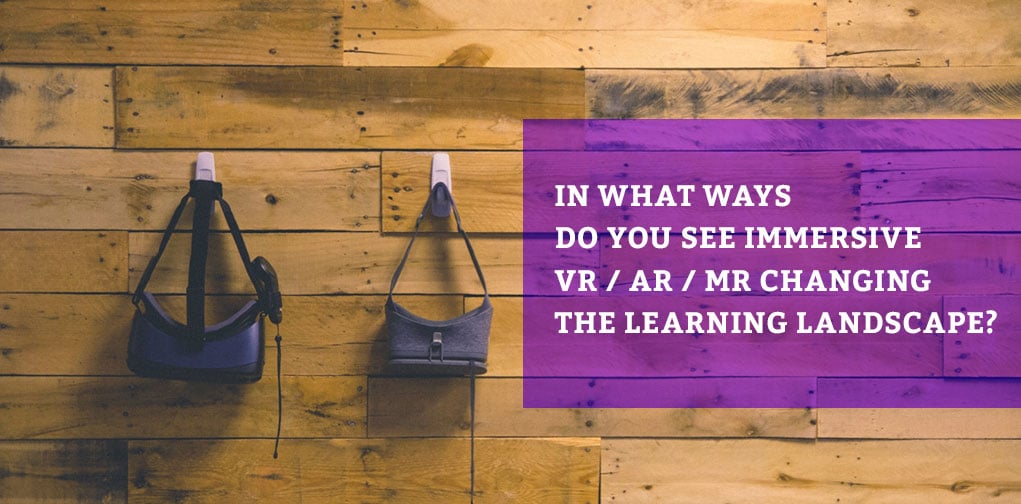
Technology has enhanced education exponentially over the last decade. From the inclusion of software to computers to mobile devices and the Internet, using technology to enhance a child’s learning is now commonplace. However, as technology continues to evolve, we educators must evolve with it. That’s why I am so interested and excited to see how immersive virtual reality (VR), augmented reality (AR), and mixed reality (MR) can be integrated into the classroom.

Use of Immersive VR / AR / MR is changing the learning landscape. These technologies are moving content and collaboration into a visual, spatial, multi-dimensional plane that can be remixed and revised, saved and shared. For example, VR can consist of holographic images projected into the environment; AR may comprise filters used through the lens of a mobile device to alter surroundings; MR might completely remove students from a familiar setting and place them in an immersive virtual one. Recently, I was able to use Mixed Reality with HoloLens in the classroom and here’s what it was like:
We used Mixed Reality with HoloLens to introduce students to the circulatory system and electronegativity in collaboration with Lifeliqe. Older students mentored younger ones in science, using the interactive 3D models to better understand these scientific concepts.
My students also used Mixed Reality to learn more about Shakespeare’s Julius Caesar and ancient Rome with HoloTour. By transporting students back to ancient times, they were better able to connect to the play. For instance, through this Mixed Reality tour, we learned about civics, policy creation, and the foundations of democracy. We were then able to connect these concepts to the current political climate. Seeing ancient Rome in this way gave the topic dimension and texture and made it more relevant to today. The use of MR gave students a sense of scale and incorporated an emotive component that they couldn’t otherwise articulate linguistically.
Including Immersive VR / AR / MR into the classroom will require educators and administrators to adapt to new assessment methods. We will need to go beyond traditional pre- and post-test models. It will require mapping content, standards, and associations to big data and visual forms of analysis. David Smith, CTO at Wearality Corporation, is developing a way to visualize big data in Mixed Reality. His working prototypes demonstrate the possibility of turning data into dimensional representations of knowledge and may not be that far off.
This would not only revolutionize the way we look at multi-modal learning outcomes for students, but also ways that students utilize and analyze collected data they’re working with on devices like Raspberry Pi. Our students are already doing some amazing things with Raspberry Pi; the connection with Mixed Reality and big data could yield fascinating results that may help them in future careers.
For more information about immersive realities and how it can impact your students and their education, please contact us at Renton Prep today.